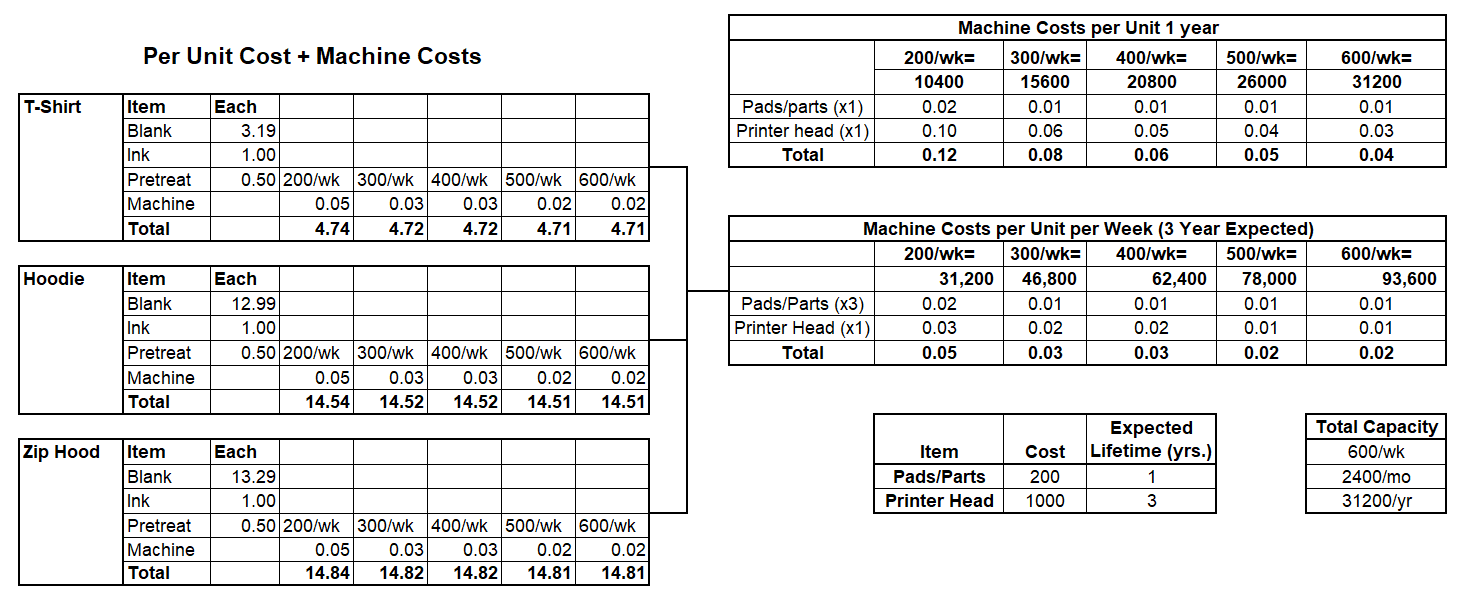ODB Printing
ODB Printing
CUSTOM APPAREL PRINTING SERVICES
CLIENT
ROLE
Pricing Strategy
Mission
Design a pricing model that maximizes profits and growth.
Background
ODB Printing provides on-demand custom apparel printing services in Salt Lake City, Utah. Unlike most apparel printing services that solely perform screen printing, ODB Printing uses an automated printer to print directly on the garment, analogous to a paper printer. As the only printer-printing service in the city, ODB Printing has the advantages of faster design modification capabilities and turnaround time per order, at a lower cost for orders under 50 units.
The original pricing model of the business was a cost plus model, based on rough estimates of cost over several units with an acceptable profit added per unit. Bulk orders were given discounts, but further arbitrary with regard to predictability of profits.
The original pricing model of the business was a cost plus model, based on rough estimates of cost over several units with an acceptable profit added per unit. Bulk orders were given discounts, but further arbitrary with regard to predictability of profits.
Strategy
The pricing model is designed to capture as much profit as possible while remaining competitively priced, with consideration to a predictable amount of profit per unit to be reinvested in the firm in the form of retained earnings. A cost minus model was adopted with the target price approximating that of a per unit price of a screen printer, at bulk discount rates. Thus, even the price of a single unit is less than what would be expected from a screen printer per unit on a large order with large discounts. Because per unit costs are substantially lower with printers than with screens, margins are considerably greater.
Retained earnings are baked into the model using labor and 50% bulk discounts as the levers. Any labor cost less than $25/hr, or pricing greater than that at 50% discount pricing is earmarked as retained earnings. At time of delivery of the pricing model the owners ran all operations and 100% of profits were reinvested (3).
The total price per unit was determined for accounting as well as for pricing (1). The client package includes labor and contribution margin tables (2) for fine-tuning pricing and revenue (3).
Retained earnings are baked into the model using labor and 50% bulk discounts as the levers. Any labor cost less than $25/hr, or pricing greater than that at 50% discount pricing is earmarked as retained earnings. At time of delivery of the pricing model the owners ran all operations and 100% of profits were reinvested (3).
The total price per unit was determined for accounting as well as for pricing (1). The client package includes labor and contribution margin tables (2) for fine-tuning pricing and revenue (3).
Costs Breakdown (1)
Labor and Contribution Margin (2)

Labor at $25/hr, far above market wage.
(for privacy actual input costs have been changed)
(for privacy actual input costs have been changed)
Pricing and Revenue (3)

Pricing and revenue with two employees at $25/hr. All prices at an assumed 50% discount.
(for privacy actual input costs have been changed)
(for privacy actual input costs have been changed)
Breakeven Analysis

(for privacy actual input costs have been changed)
